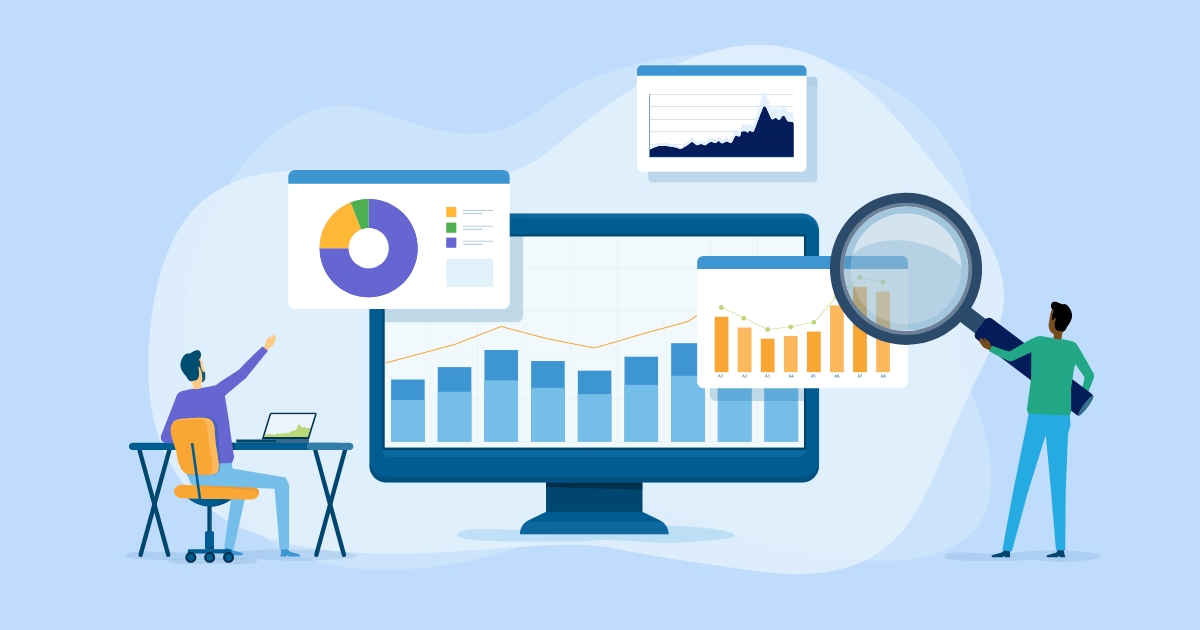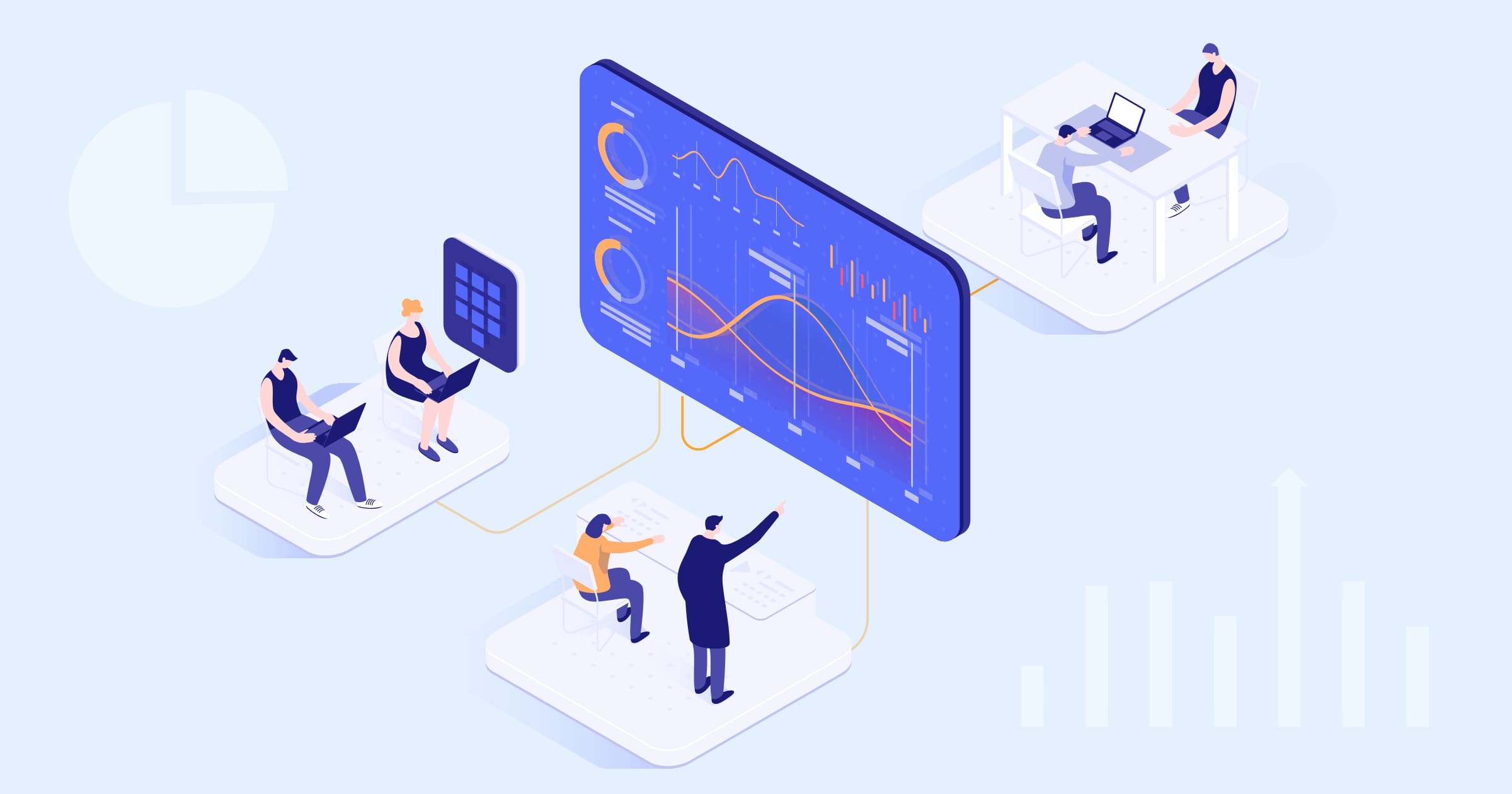Guide to Third-Party Risk Intelligence
- Section 1 What is third-party risk intelligence?
- Section 2 What domains can third-party risk intelligence help cover?
- Section 3 How to use third-party risk intelligence?
- Section 4 What are the benefits of using third-party risk intelligence?
- Section 5 Can third-party risk intelligence replace an inside risk assessment?
What is third-party risk intelligence?
Third-party risk intelligence is collecting and analyzing information from external data sources to identify potential threats and opportunities associated with third-party or supplier organizations that could impact your organization.
Third-party risk intelligence solutions are a powerful tool to help you identify and monitor risks in real-time across different areas or domains such as cybersecurity, operational, reputational, financial, and compliance. With these solutions, you can evaluate the performance, stability, and resilience of your third-party partners in various scenarios and contexts, mitigate the impact of third-party incidents or disruptions that can affect your business operations and reputation, and optimize your third-party risk management strategy and processes based on data-driven insights and best practices.
Utilizing external data to inform risk management of third-party entities is commonly referred to as third-party risk intelligence. This practice can also be known as external-sourced risk intelligence, threat intelligence or threat risk intelligence, supplier risk intelligence, or business risk intelligence. These terms all encapsulate the same fundamental concept of using external data to manage the risks associated with third-party relationships.
To gather this type of intelligence, data innovators leveraged cutting-edge technologies like artificial intelligence, machine learning, and cloud computing. These advanced tools simplify the process of gathering, analyzing, and interpreting external data, unlike earlier manual methodologies.
In today's rapidly evolving landscape of third-party risk management, incorporating third-party risk intelligence has become a powerful best practice. It serves as a valuable asset in your organization's arsenal to proactively and effectively tackle risks, even during the gaps between regular due diligence assessments. By integrating this practice into your organization's risk management program, you can establish a robust foundation for mitigating threats, safeguarding your business interests, and maintaining operational continuity and reputational integrity. With third-party risk intelligence, you can stay ahead of the curve and stay safe.
What risk domains can risk intelligence help cover?
- Cybersecurity Risk: It is imperative to thoroughly evaluate the cybersecurity posture of your third-party vendors or suppliers with the same seriousness you would assess your organization's internal practices. This comprehensive evaluation should include their vulnerability to cyberattacks, data protection practices, security policies, and incident response capabilities. By leveraging third-party risk intelligence, you can confidently enhance your cybersecurity risk management. External scanning can improve due diligence by continuously monitoring for indicators of compromise, infected machines, proper or improper configuration of cybersecurity controls, positive or poor cyber hygiene, and potentially harmful user/employee behaviors.
- Privacy Risk: It's essential to assess the data security and privacy practices of your vendors or suppliers to ensure they comply with data protection regulations and protect sensitive information. Today it's possible to obtain third-party risk intelligence by scanning your vendor or supplier's website, which provides valuable insights and benchmarks on their data privacy compliance status or areas of improvement.
- Business Health and Credit: It is important to assess the financial stability and health of third-party vendors, including their financial performance, creditworthiness, debt levels, and overall financial viability. By leveraging third-party risk intelligence, you can obtain real-time information about a supplier's business health and credit posture, allowing you to proactively identify any early warning signals that their business may be at risk.
- Reputational Risk: By utilizing third-party risk intelligence, your organization can actively monitor for negative media coverage, evaluate suppliers' public image, and recognize potential incidents that could harm their reputation or indirectly affect your organization's reputation.
- Compliance Risk: Regulatory databases and registries accurately maintain records of compliance status, sanctions, fines, and violations of third-party organizations.
- Environmental, Social and Governance (ESG): Evaluating a vendor's environmental practices, sustainability initiatives, and compliance with environmental regulations is crucial to mitigating ecological risks. It is also important to focus on a vendor's ethical practices, including labor conditions, human rights, and social responsibility, to avoid reputational and compliance risks associated with unethical behavior. Utilizing risk intelligence in these areas, you can proactively address potential issues and make informed decisions that align with your organization's values and goals.
How to use risk intelligence?
To bolster your third-party risk management program, it's recommended to integrate third-party risk intelligence into various aspects of your risk management processes. Here are some different ways you can utilize third-party risk intelligence to enhance your risk management strategy:
- Supplier or Vendor Selection: Incorporate risk intelligence into your vendor selection process by using it to highlight risks during pre-contracting evaluations and vettings. You can assess potential vendors' risk profiles before entering into agreements to ensure they align with your risk tolerance and business objectives. Develop a risk rating or scoring system based on the intelligence data to quantitatively assess vendor risk. This can aid in decision-making and resource allocation.
- Reporting and Documentation: Maintain comprehensive records of all risk intelligence assessments and resulting actions. Use this documentation to demonstrate due diligence to regulators, auditors, and stakeholders.
- Risk Prioritization: Prioritize third-party risks using risk intelligence to evaluate vendor security, regulatory compliance, financial stability, and reputational risks.
- Due Diligence Direction: Perform enhanced due diligence on high-risk vendors based on third-party risk intelligence findings.
- Continuous Monitoring: Implement continuous monitoring of third-party vendors using third-party risk intelligence. This feature allows you to receive real-time updates on your supplier' or vendors' risk profile, including alerts and notifications on emerging risks and adverse events.
What are the benefits of using risk intelligence?
Leveraging third-party risk intelligence in your third-party risk management program can offer numerous benefits. Here are some of the advantages you can gain:
- Access real-time data: Vendor risk can evolve over time, so it can be helpful to collect different data types for comparison and review. Point-in-time snapshots can be valuable to compare two separate vendors. At the same time, continuous monitoring allows you to see a single vendor's risk over time. Access to real-time data updates will enable you to respond quickly to changing circumstances, including new regulatory requirements and threats.
- Gain a more focused approach: You can enhance your productivity and resource allocation by identifying areas that require your attention and focusing on them effectively.
- Get insight into the vendor's value: Ensure that your vendor relationship continues to bring value to your organization and that they meet the standards you've outlined in the vendor contract.
- Avoid costly surprises: Continuous monitoring can help you quickly identify and address regulatory violations, cyber breaches, and instability in your vendor's operations. By detecting and mitigating risks early, you can avoid costly incidents like data breaches, litigation, and reputational damage.
- Early Risk Detection: These solutions can help you identify emerging risks and vulnerabilities, allowing you to take proactive measures to mitigate them before they become significant issues.
- Data Aggregation: By gathering data from multiple sources, we eliminate the need for you to spend time and effort on analysis.
- Scalability: As your organization grows and your vendor network expands, third-party risk intelligence solutions can scale to accommodate the increased volume of data and vendors.
- Cost Savings: By identifying and mitigating risks early, you can avoid costly incidents, such as data breaches, litigation, and reputational damage.
- Improved Decision-Making: Data-driven insights from risk intelligence solutions empower you to make more informed decisions regarding your vendor relationships.
- Resource Allocation: You can allocate resources more effectively, focusing on higher-risk vendors while reducing the oversight of low-risk partners.
- Time Savings: By automating many risk assessment processes, you can save time and allocate resources to other critical business activities.
- Long-Term Resilience: Effective risk management contributes to the long-term resilience and sustainability of your organization.
- Business Continuity: Reduce the risk of disruptions in your supply chain or business operations by proactively managing third-party risks.
- Reputation Protection: Effective third-party risk management is crucial for safeguarding your organization's reputation and maintaining customer trust.
Does risk intelligence replace the inside risk assessment?
No, It's important to recognize the value of third-party risk intelligence from external sources in helping organizations manage risk. However, this type of intelligence should not be viewed as a complete solution on its own. Instead, it should be seen as a useful supplement to internal risk assessments. By combining external scanning intelligence with internal assessments, organizations can better understand the potential risks associated with third-party relationships and develop more effective risk management strategies. Here's why both elements are essential.
- Comprehensive Risk Assessment: Internal risk assessments concentrate on identifying the risks to your organization associated with the products and services you are seeking to obtain from third parties, including those affecting your operations, employees, and internal processes. Third-party risk intelligence, on the other hand, is primarily concerned with the risks associated with external vendors, suppliers, and partners. By combining both internal and external risk assessments, you create a more comprehensive view of the risks that your organization faces.
- Different Perspectives: Internal risk assessments are based on your organization's knowledge, data, and insights, while third-party risk intelligence leverages external data sources and specialized tools to assess the risks associated with third-party relationships. The external perspective provides valuable insights that may not be readily available internally.
- Risk Identification: Internal risk assessments typically focus on known risks and vulnerabilities within your organization. Third-party risk intelligence helps identify external risks, such as cybersecurity vulnerabilities, regulatory compliance issues, financial stability, and reputational risks associated with your third-party vendors.
- Proactive Risk Management: Third-party risk intelligence can provide early warning signals about emerging risks related to your vendors, allowing you to take proactive measures to mitigate them. Internal risk assessments tend to be more reactive, addressing known or identified risks.
- Resource Allocation: By using third-party risk intelligence, you can allocate internal resources more efficiently. You can prioritize risk management efforts based on the risk assessments provided by third-party intelligence solutions. This can be particularly useful for organizations with a large number of third-party relationships.
- Regulatory Compliance: Many industry regulations and standards require organizations to assess and manage third-party risks. Third-party risk intelligence solutions can assist in meeting these compliance requirements.
- Holistic Risk Management: By integrating both internal and external risk assessments, organizations can adopt a more holistic approach to risk management. This approach allows for a better understanding of the interconnected nature of risks and how they can impact the organization as a whole.
Popular Articles
Read our latest articles on leveraging risk intelligence and best practices for ongoing monitoring.

Why You Should Continuously Monitor Third Parties Between Annual Reviews
Continuous third-party monitoring is a vital part of third-party risk management, …

Ongoing Monitoring Best Practices for Third-Party Risk Management
When you sign a contract with a supplier or vendor, you're not done with the third…

